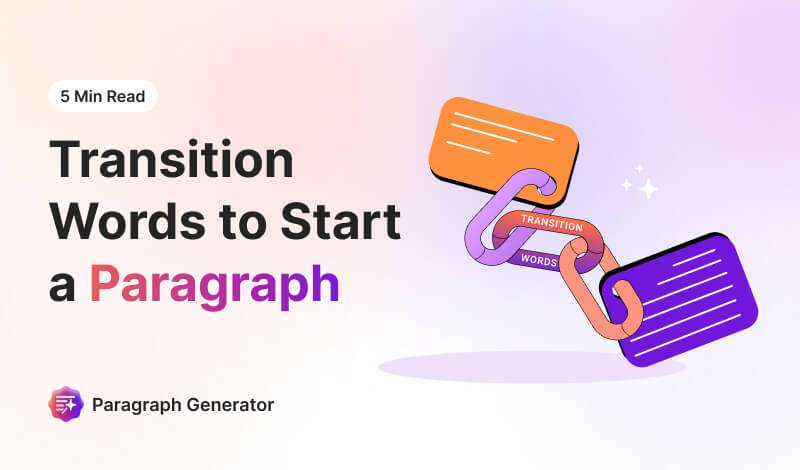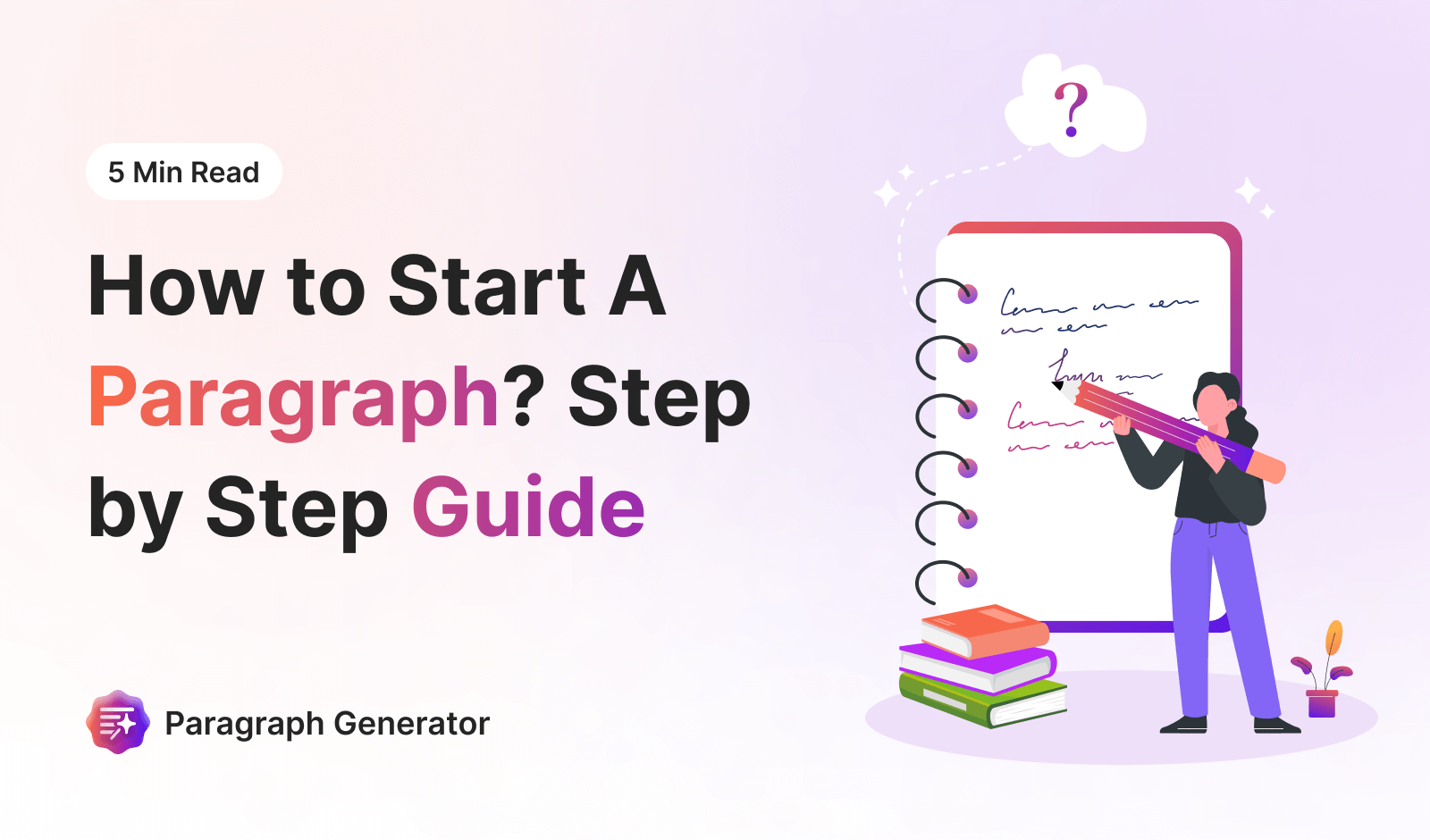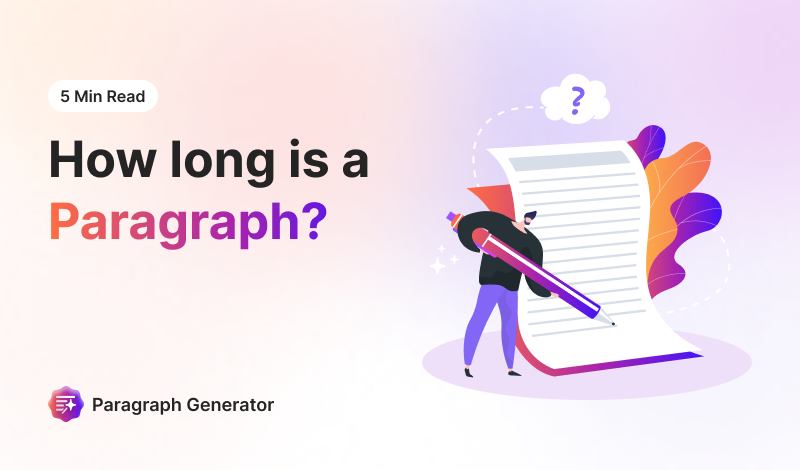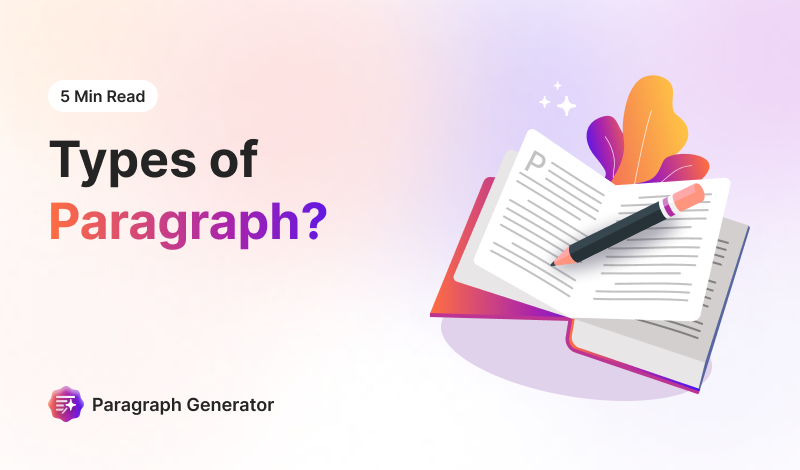Fluency in content truly attracts the readers. It is an element that determines your strength as a writer and showcases how well you can explain something.
However, maintaining a flow can sometimes be a bit tricky, especially when the topics become complex and deeply scientific.
One effective way to combat this problem is to use transition words to start each paragraph. This will ensure that the readers are consistently following your thought process without falling off in between.
Today’s post will present a collection of transition words, aslo know as linking words, that we use daily to improve readability and fluency in our crafts. We will also be going through some examples to get you started on your penmanship journey. So, let’s get started.
What are Transition Words?
As the name implies, transition words take the reader from one thought to another. They are mostly added to the start of a paragraph to add to the information presented in earlier paragraphs. Or, to showcase a contrast between two variables.
Transition words can also be helpful to show emphasis on a key point, sequence ideas or events, or conclude a chain of thought. These are commonly used in academic pieces; however, their use cases are practically unlimited.
Types of Effective Transition Words
Below, we have compiled a list of effective linking words across different categories to improve the readability of your content.
Adding Information
- Furthermore
- Moreover
- Additionally
- In addition
- Similarly
- Likewise
- Along with
Showing Contrast
- However
- On the other hand
- In contrast
- Nevertheless
- Yet
- Unlike
- Despite this
- Conversely/On the contrary
Illtreating or Emphasizing a Point
- For example
- In fact
- For instance
- To illustrate
- Indeed
- Specifically
Showing Cause and Effect
- As a result
- Consequently
- Therefore
- Hence/Thus
- Subsequently
- While
- Due to this
- Accordingly
Sequencing Ideas or Events
- First-off
- To begin with
- Secondly/Thirdly
- Meanwhile
- Next
- At last
- Subsequently
- Eventually
- Finally
Concluding or Summarizing the Discussion
- In conclusion
- To sum it up
- In the end
- Briefly
- Ultimately
- In summary
- Overall
Starting a Paragraph Using Transition Words
When opening a paragraph, try asking yourself what you are trying to convey to the reader. Is the next block of text a summarization of whatever you said earlier, or just an addition to the original thought?
Asking these questions at the right time will result in smoothly transitioning paragraphs that contain the reader’s attention till the end.
There are other considerations as well, like making a suitable content outline before you start writing. This will help you recognize the placement and flow of key points and use the transition words to start a paragraph.
Along with making a structure, try jotting down the key points in chronological order. Brainstorming before beginning a new piece of content will provide you with a clarity of thought that you can transfer efficiently to the audience.
Lastly, we recommend taking short breaks in the writing session to allow your brain to reset before beginning a new paragraph.
This will help you assess the current context better to come up with a fitting flow for your articles, blogs, research papers, essays, and more.
Examples with Use-cases
After learning about linking words, it is time to review their use cases. These are given below.
Example 1: Adding Information
“Playing sports is great for teenagers to get into healthy habits. The individuals can learn discipline and dedication to achieve greatness in real life.”
Suppose you want to continue talking about the ‘benefits of playing sports for teenagers.’ You’ll need a new paragraph for the next key point, and this is how you can do it fluently.
“Additionally, doing sports boosts teamwork skills in teenagers, especially in games like Volleyball, Cricket, Football, and more …” |
Example 2: Showing Contrast
“AI helps game developers make code snippets at an unparalleled pace. This allows you to quickly complete your tasks and boost productivity.”
If you want to shift from talking about ‘how AI is beneficial for game developers’ to its downsides. Then, you can use a transition word to start the new paragraph, like:
“On the contrary, codes developed by AI may contain bugs and errors that translate to the final product …” |
Example 3: Emphasizing a Point
“The UNEP plastic recycling initiative is a solid campaign to end global plastic pollution. It aims to make Earth a healthier place for future generations to come.”
To emphasize ‘UNEP’s efforts to eliminate plastic pollution’ and gravitate the reader to the topic, you can use the following method:
“In fact, this initiative has already recycled over a thousand tons of plastic in its first year. This shows the popularity that this campaign has got, worldwide …” |
Example 4: Showing Cause and Effect
“The invention of 3D printing has enabled manufacturers to bring complex ideas and designs to life. The technology can create everything from medical implants to automotive parts.”
Showing the cause and effect of ‘how 3D printing is helping the manufacturing industry’ can be done in the following manner.
“As a result, manufacturing processes have become more customizable, helping industries to meet variable demands …” |
Example 5: Sequencing Ideas
“When I first met Barry the dog, it was a struggle for me to befriend him. First, I tried feeding him his favorite food, but it didn’t work. Then, I threw him a ball to play, but still nothing.”
It is important to use a sequencing transition word here to smoothly link two paragraphs together. Let’s see how you can do it in style.
“Finally, I tried enticing him for a quick walk in the park, and the rest is history. Barry is now the best friend I’ve ever known …” |
Example 6: Summarizing the Discussion
“The journey to Mars, once considered science fiction, is rapidly becoming a reality. Organizations like NASA and SpaceX are investing billions into making human exploration of the Red Planet possible, with plans for crewed missions soon. These missions hold the promise of uncovering Mars’s mysteries.”
Imagine this is an excerpt from a blog titled ‘The Journey to Mars: From Fiction to Reality.’ If the author wants to conclude everything said earlier, they can do so in the following way:
“In conclusion, Mars exploration represents humanity’s boldest step yet into the cosmos. This endeavor pushes the boundaries of science and engineering and fulfills a deep-seated curiosity to explore the unknown …” |
Notice that in each example, the flow of the discussion doesn’t get broken, and the reader genuinely gets invested in your topic. Hence, these connecting words help you combine your thoughts to create coherent, enjoyable pieces.
With that said, we understand that there are still a lot of beginners and newbies looking to tackle many issues with content readability and flow. If you’re one of them, then consider the AI Paragraph Generator tool to revamp your crafts now!
Summing it up
Fluency and readability in content are crucial in attracting readers and determining a writer's strength in explaining complex topics.
Transition words at the start of paragraphs effectively combat this challenge, ensuring that readers follow the thought process consistently.
In this post, we saw some effective linking words and how to use them with examples and use-cases. Clearly following them will surely lead to polished writing skills.
That’s all for now. We hope you enjoyed reading our content!








